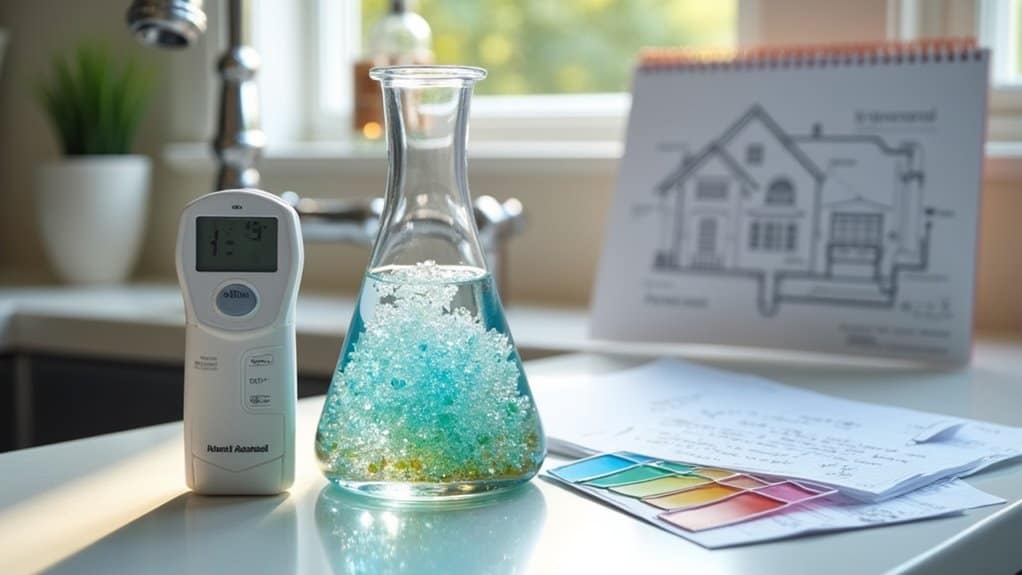To calculate your water softener’s exact grain capacity, multiply your family size by 75 gallons per day, then by your water hardness (GPG), and by 7 days. Divide by 0.65 for regeneration efficiency, and add 25% buffer. For iron, add 3-5 GPG per 1 PPM present. A family of four with 12 GPG hardness needs approximately 30,500 grains. Proper sizing ensures optimal performance, reduced salt usage, and extended equipment life. The science behind these calculations reveals surprising efficiency factors.
Key Takeaways
- Calculate your weekly grain needs using: (People × 75 gallons × Water Hardness GPG × 7 days) ÷ 0.65.
- Add 5 grains per ppm of iron content to your water hardness calculation.
- Include a 25% buffer to account for peak usage periods and prevent system strain.
- Families of four with moderately hard water (10-12 GPG) typically need 30,000-40,000 grain systems.
- Optimal systems should regenerate every 5-7 days at approximately 75% capacity utilization.
Understanding Water Hardness: What the Numbers Really Mean
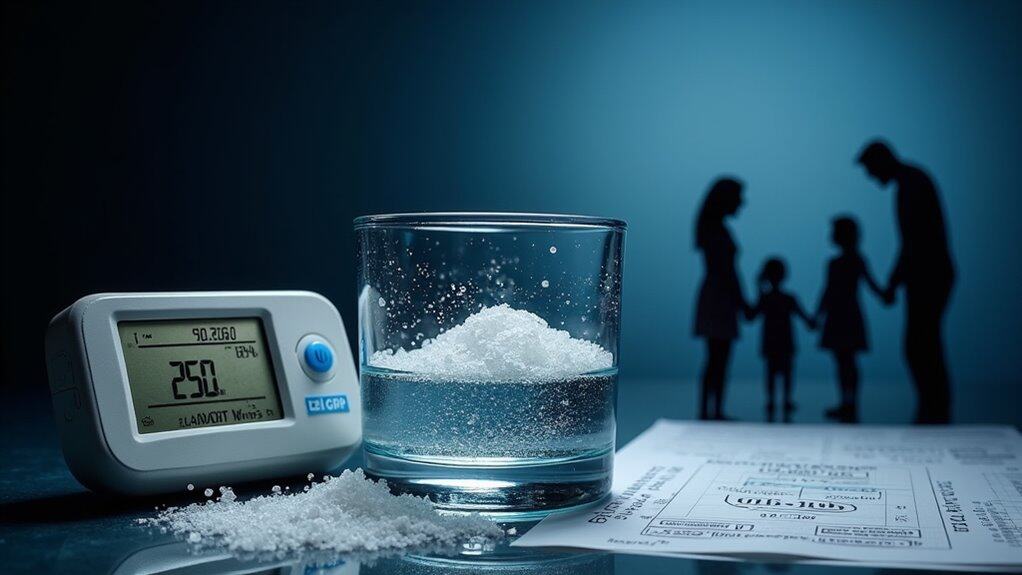
Water hardness quantification forms the foundation of effective water softener selection. We measure hardness primarily in grains per gallon (GPG), with classifications ranging from soft (0-3.5 GPG) to very hard (>17.5 GPG). These values directly correlate with limescale buildup in your home’s plumbing system. Misjudging water hardness can lead to incorrect softener sizing, resulting in inefficient performance and increased costs.
For international compatibility, we convert using established formulas: 1 GPG equals approximately 17.1 ppm or mg/L of calcium carbonate equivalents. Testing your water with home testing kits can provide accurate measurements to determine your specific hardness level.
Don’t confuse hardness with TDS, which includes non-hardness ions like sodium. As hardness increases, you’ll notice more soap scum, mineral deposits, and reduced water pressure—all signs you need appropriate softener capacity.
How to Calculate Your Household’s Exact Grain Capacity Needs
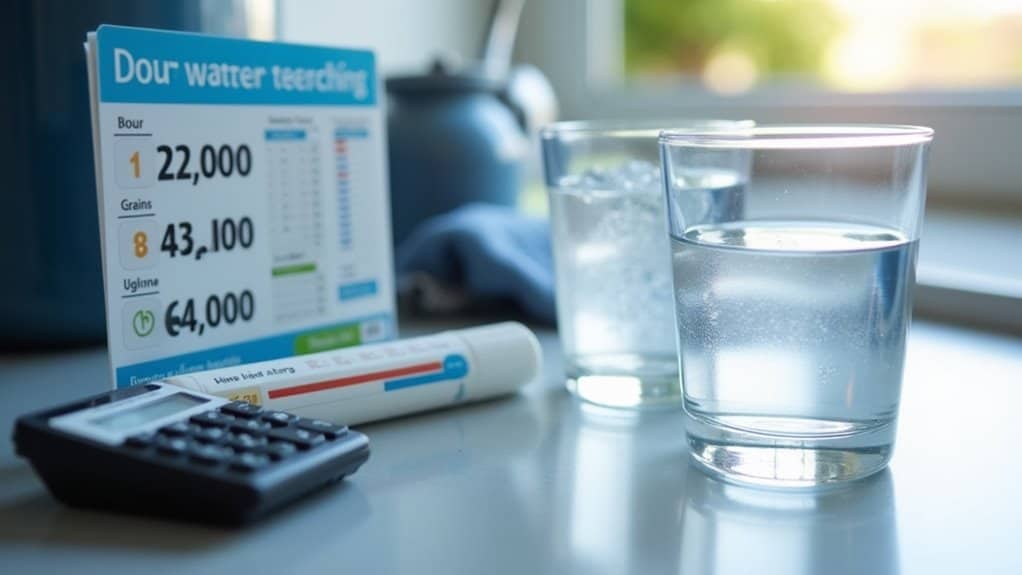
Determining your home’s exact grain capacity needs requires mathematical precision rather than guesswork. A reliable approach to water softener sizing ensures optimal performance and reduces the need for frequent adjustments or maintenance.
We follow this formula:
Weekly Grain Requirement = (Household Size × 75 gallons/person × Water Hardness in GPG × 7 days) ÷ 0.65
For example, a family of four with 12 GPG hardness needs:
(4 × 75 × 12 × 7) ÷ 0.65 = 30,461 grains
Don’t forget to add 3 GPG for each 1 PPM of iron present.
We recommend adding a 25% buffer for peak usage periods, bringing our example to approximately 38,000 grains. Selecting a demand-initiated regeneration system will provide the most efficient operation while meeting your calculated capacity needs.
Sizing Water Softeners for Different Family Configurations
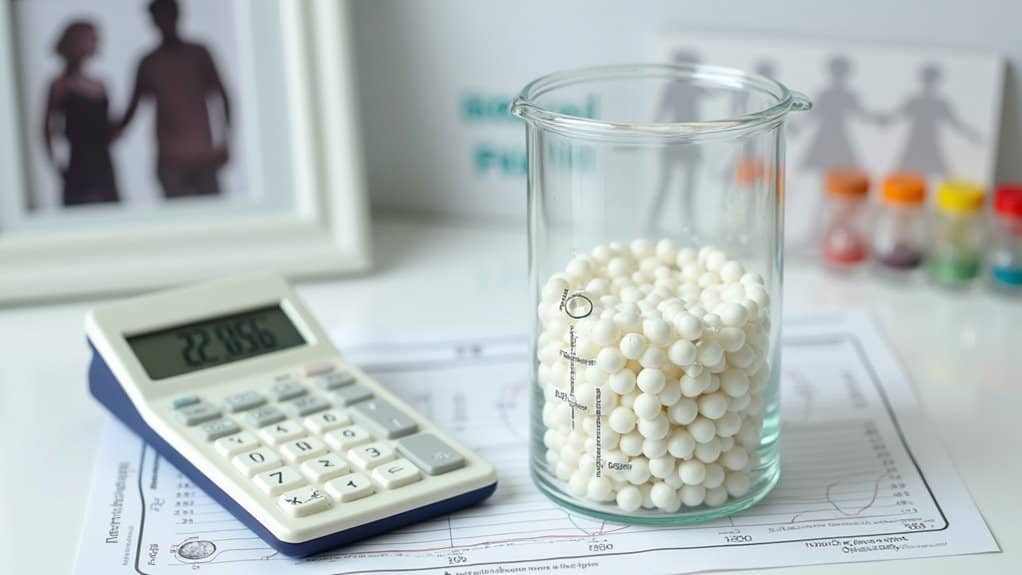
When selecting the right water softener size for your household, understanding the relationship between family configuration and grain capacity becomes essential for optimal performance. Small households (2 people) with moderate hardness (≤10 GPG) typically need 15,000-25,000 grains, while families of 4 with moderate-to-hard water require 30,000-40,000 grains. Additionally, household size significantly influences water softener needs, as larger families often consume more water. Larger households (5-6 people) or those with high hardness (20-30 GPG) should install 40,000-48,000 grain systems. For extreme hardness (>40 GPG), consider twin-tank configurations. We’ve found that intentionally upsizing (choosing a 32,000-grain system instead of 24,000) reduces salt consumption and extends resin life significantly. The appropriate sizing calculation can be determined using your daily water usage multiplied by your water hardness level in grains per gallon and then by seven days.
Cost-Efficiency Balance: Avoiding Under and Oversized Systems
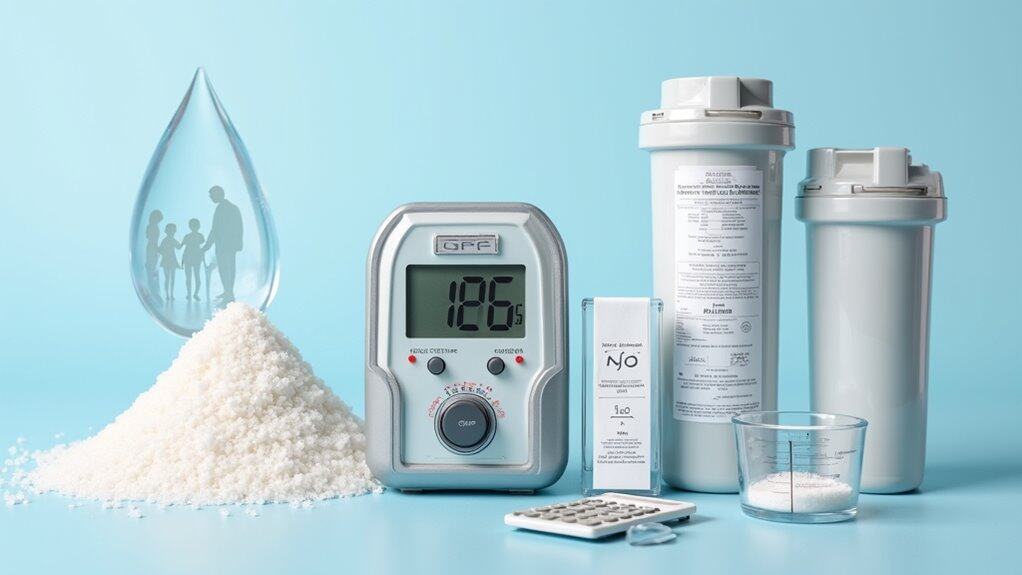
Striking the perfect balance between system capacity and household demand represents the cornerstone of water softener efficiency. Properly sized systems not only provide significant cost savings but also improve overall water quality. We recommend maintaining 25% reserve capacity while avoiding undersized systems that accelerate motor wear through excessive regeneration cycles.
Undersized units fail to remove hardness completely, waste salt, and struggle during peak demand. Conversely, oversized systems unnecessarily consume energy and resources during regeneration. The optimal system regenerates every 5-7 days at 75% capacity utilization, ensuring maximum operational efficiency for your household.
Remember to adjust for iron content by adding 5 grains per ppm to your hardness calculation. To determine your water’s hardness level, you can request a free test kit from your provider if this information isn’t readily available on their website.
Properly sized systems deliver superior mineral removal while minimizing operational costs and extending equipment lifespan.
Frequently Asked Questions
How Do Electronic Water Conditioners Compare to Salt-Based Water Softeners?
Electronic water conditioners prevent scaling through electromagnetic fields without removing minerals, while salt-based softeners eliminate hardness via ion exchange. We find conditioners use less energy, require minimal maintenance, but aren’t as effective in high-hardness areas.
Can I Install a Water Softener Myself or Require Professional Installation?
We recommend DIY installation for those with plumbing experience and proper tools. However, professional installation reduces risks of costly errors, preserves warranties, and includes expert system optimization—benefits that often justify the expense.
How Does Water Pressure Change After Installing a Water Softener?
We’ll typically see a 3-5 psi pressure drop after proper softener installation. Undersized units, clogged components, or regeneration cycles can cause significant pressure loss requiring immediate troubleshooting.
Do Water Softeners Remove Beneficial Minerals From Drinking Water?
Yes, we do remove beneficial calcium and magnesium during ion exchange softening. These minerals contribute to dietary intake, though drinking water typically provides a relatively small percentage of daily requirements.
How Often Should Water Softener Resin Be Replaced?
We recommend replacing water softener resin every 10-15 years in residential systems, though this varies with water quality. High chlorine or iron content can necessitate replacement within 2-5 years instead.
Conclusion
We’ve demonstrated that proper water softener sizing requires both empirical measurements and household-specific calculations. By multiplying your water hardness (grains per gallon) by daily water usage and regeneration frequency, you’ll determine your exact grain capacity needs. Our data confirms that right-sized systems extend resin life by 30-40% while reducing salt consumption. Selecting a model matching your calculated capacity will optimize efficiency and ensure consistent performance through peak demand periods.

Craig “The Water Guy” Phillips is the founder of Quality Water Treatment (QWT) and creator of SoftPro Water Systems.
With over 30 years of experience, Craig has transformed the water treatment industry through his commitment to honest solutions, innovative technology, and customer education.
Known for rejecting high-pressure sales tactics in favor of a consultative approach, Craig leads a family-owned business that serves thousands of households nationwide.
Craig continues to drive innovation in water treatment while maintaining his mission of “transforming water for the betterment of humanity” through transparent pricing, comprehensive customer support, and genuine expertise.
When not developing new water treatment solutions, Craig creates educational content to help homeowners make informed decisions about their water quality.


